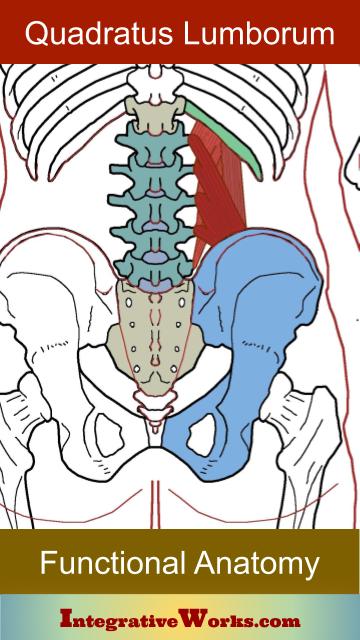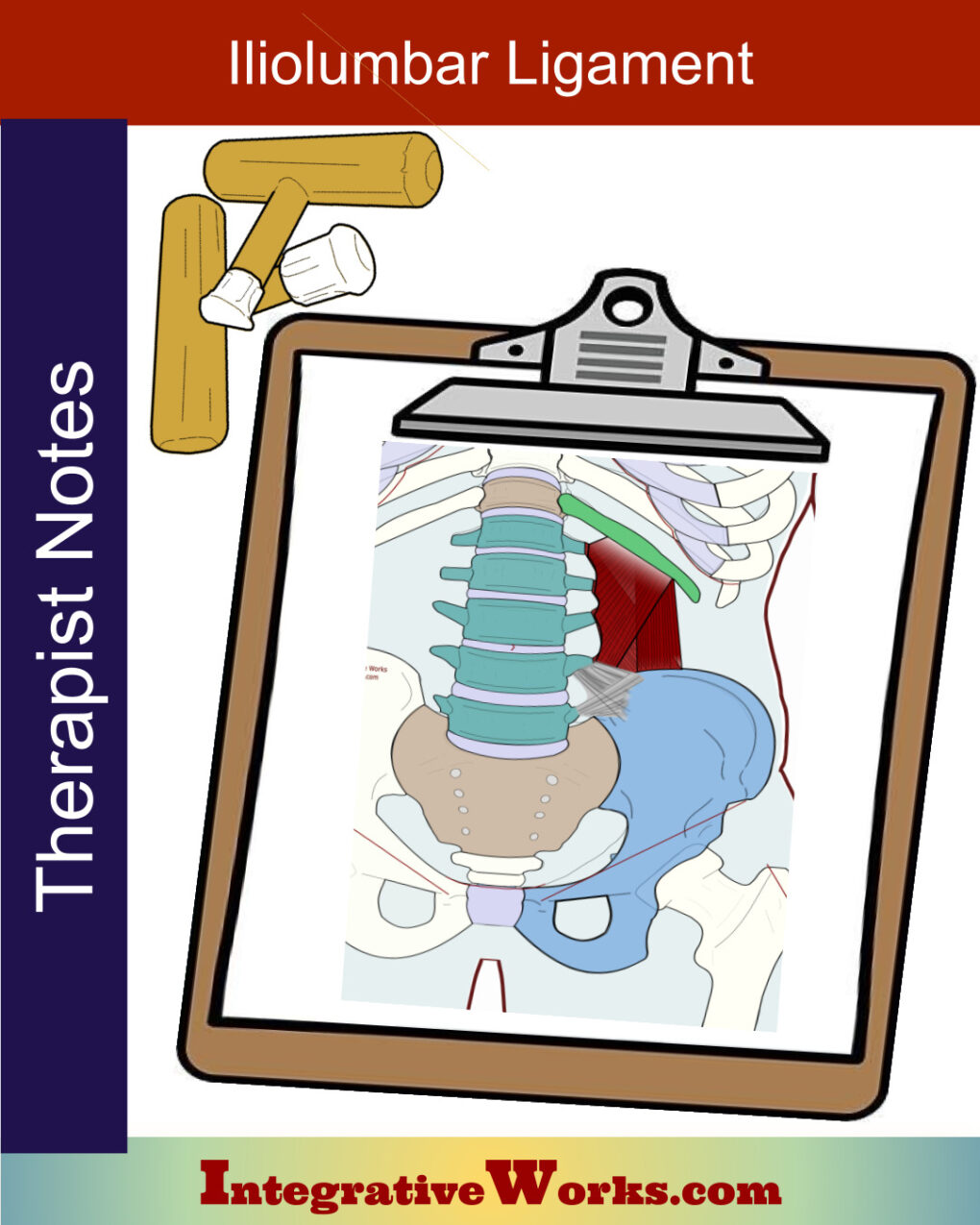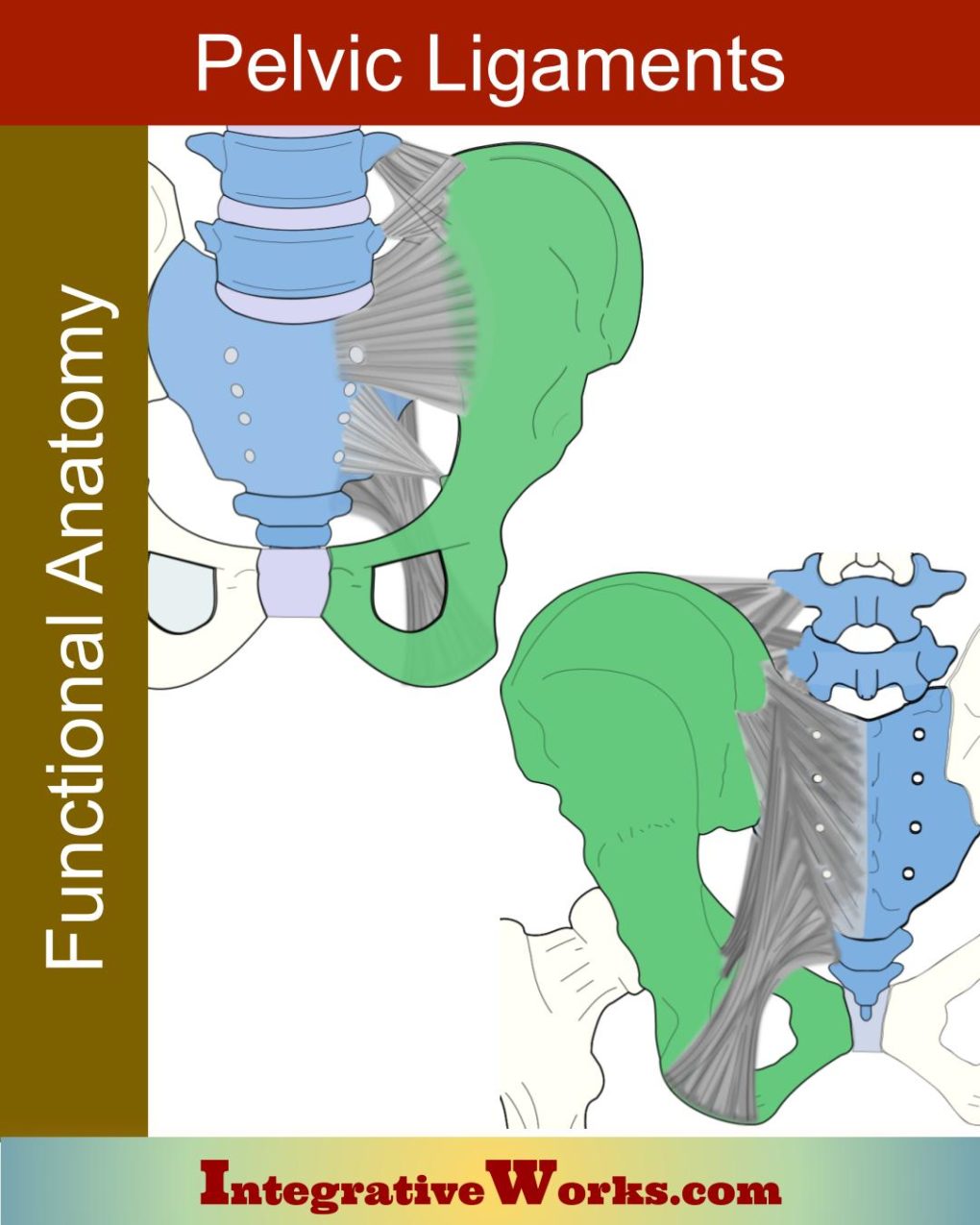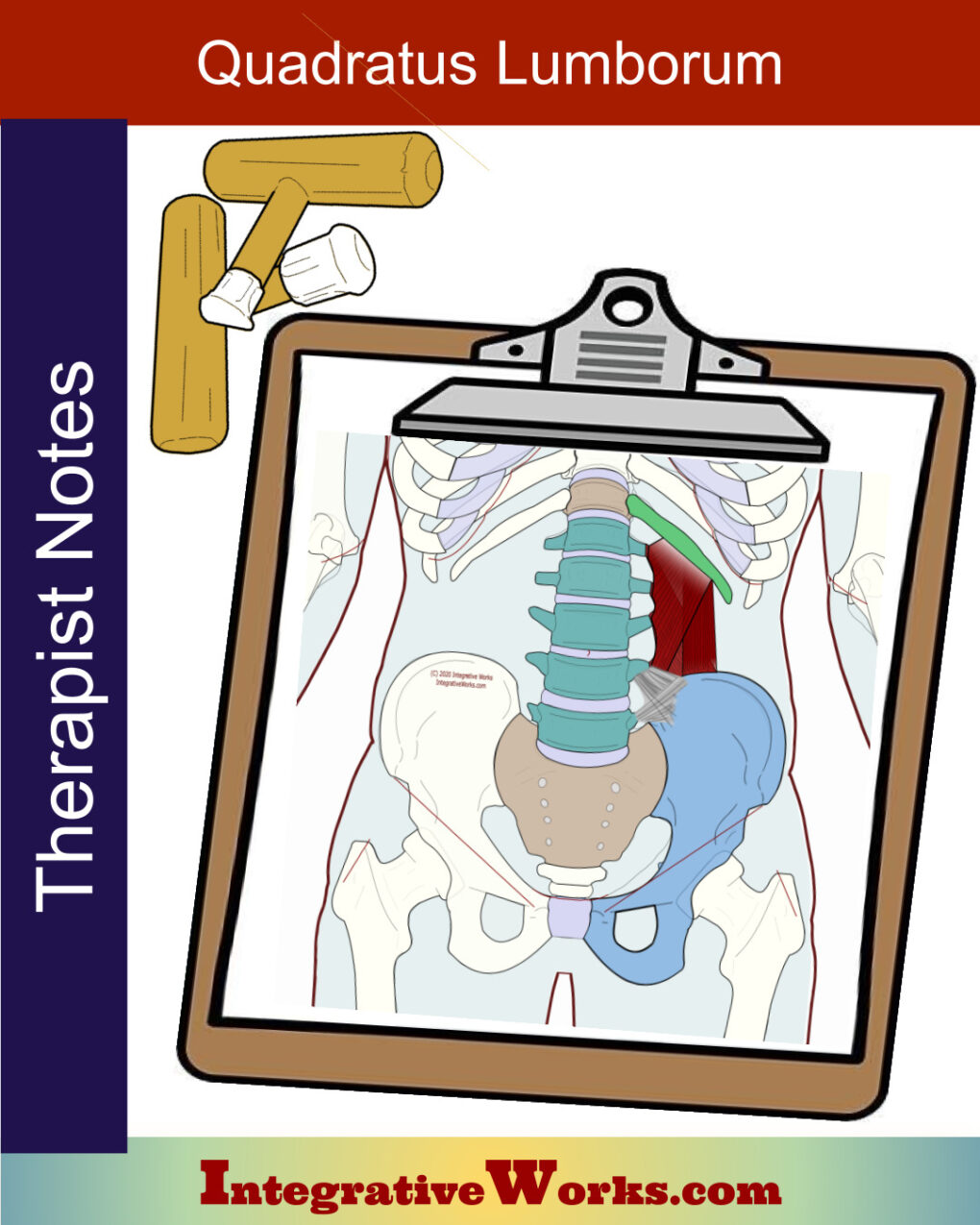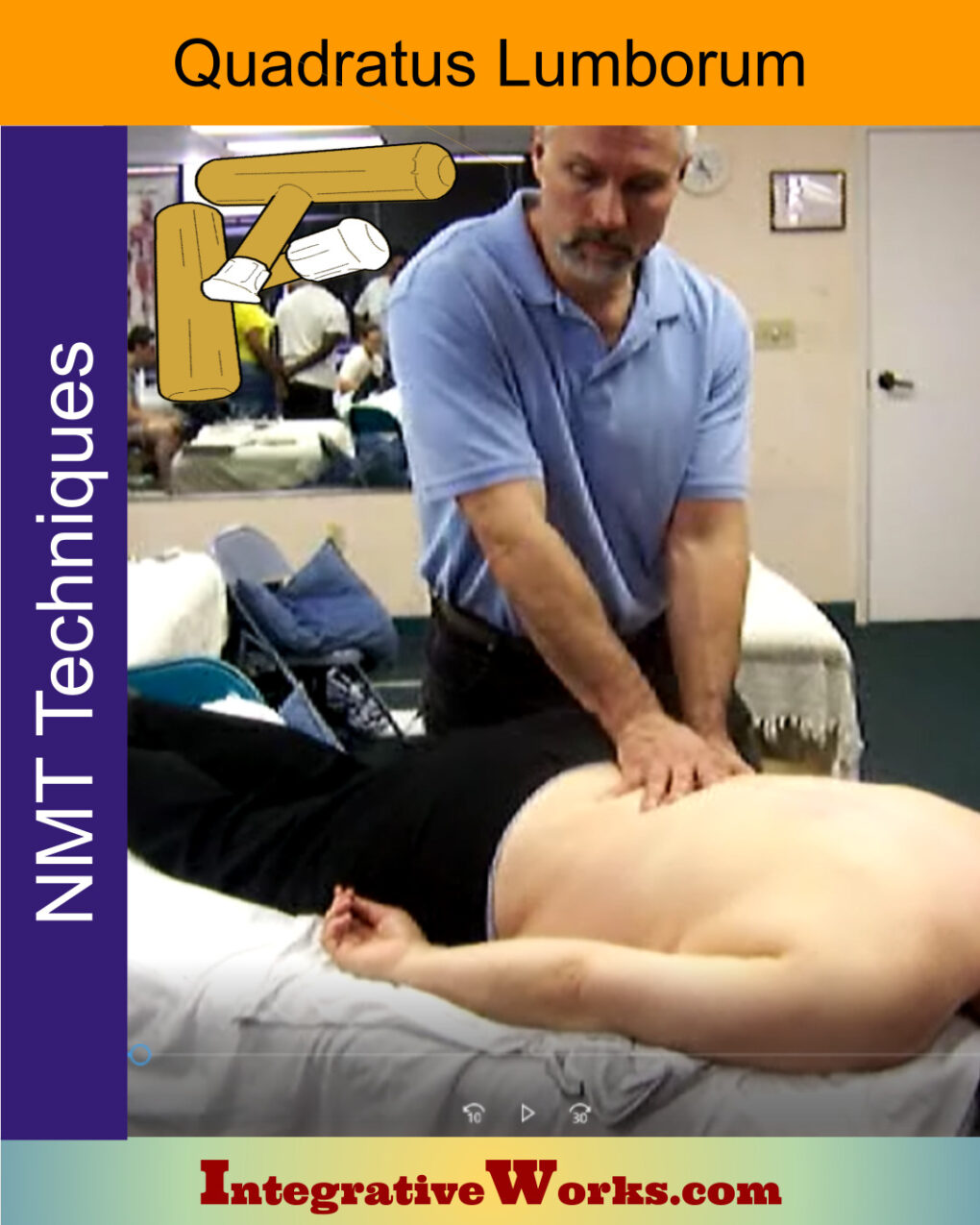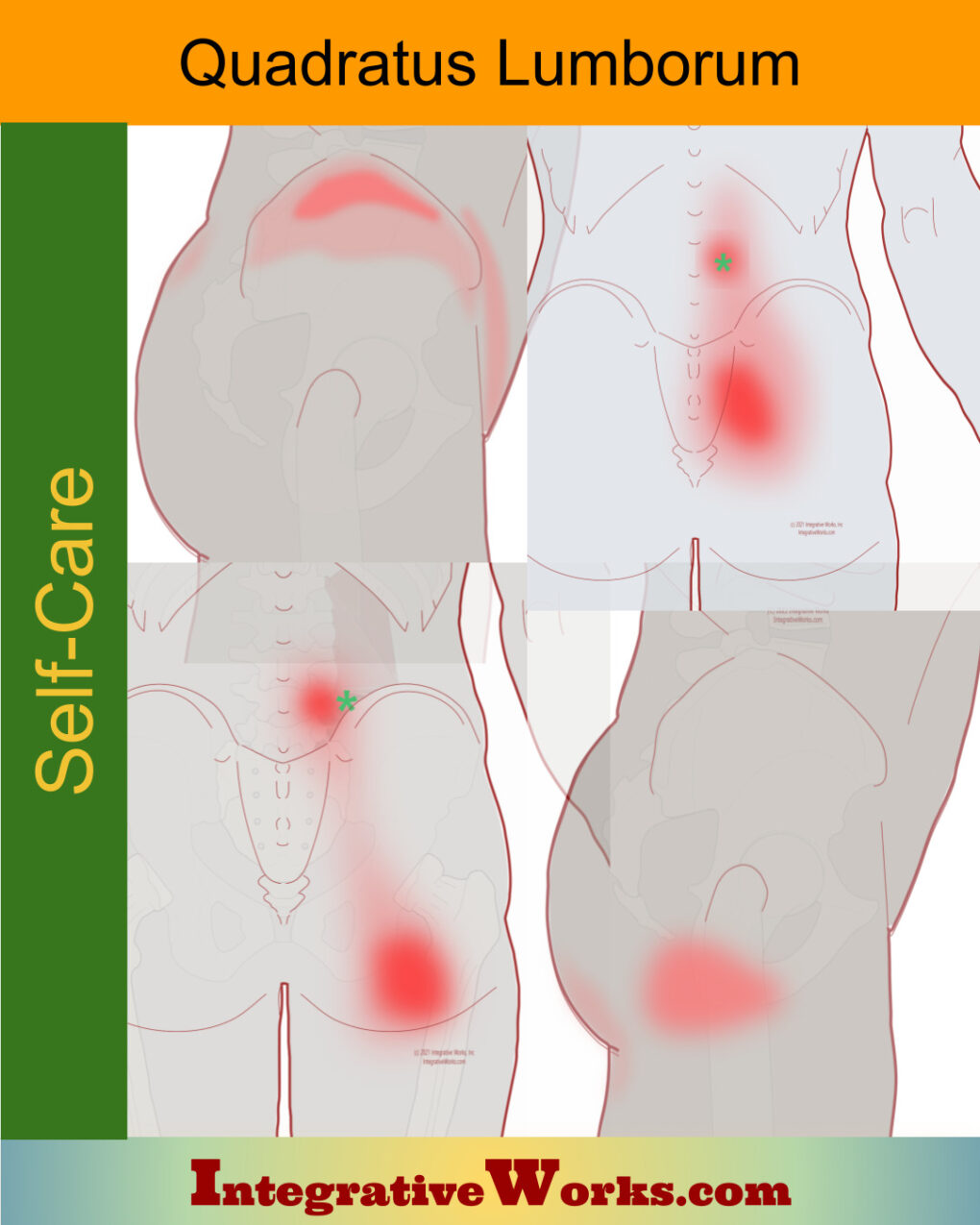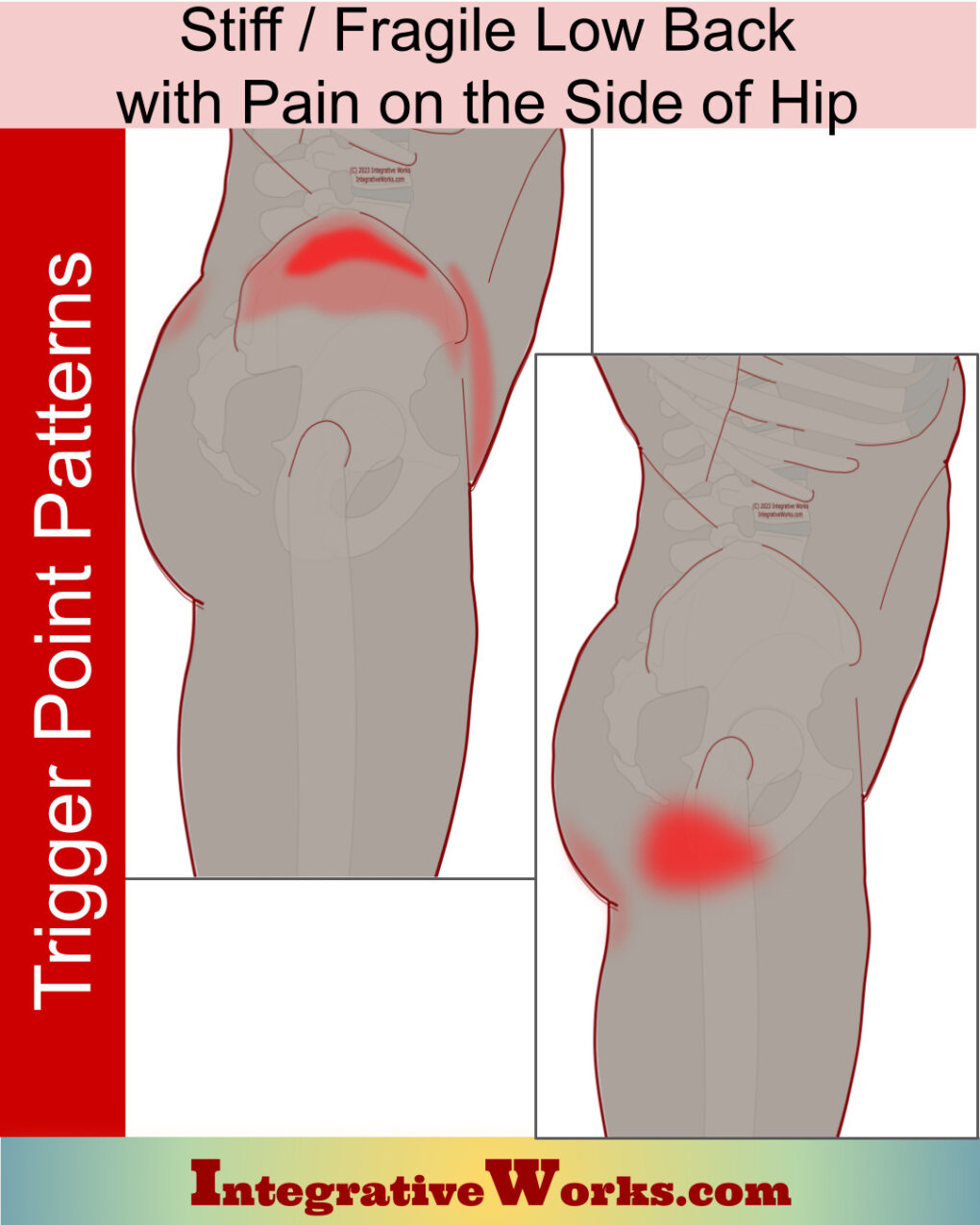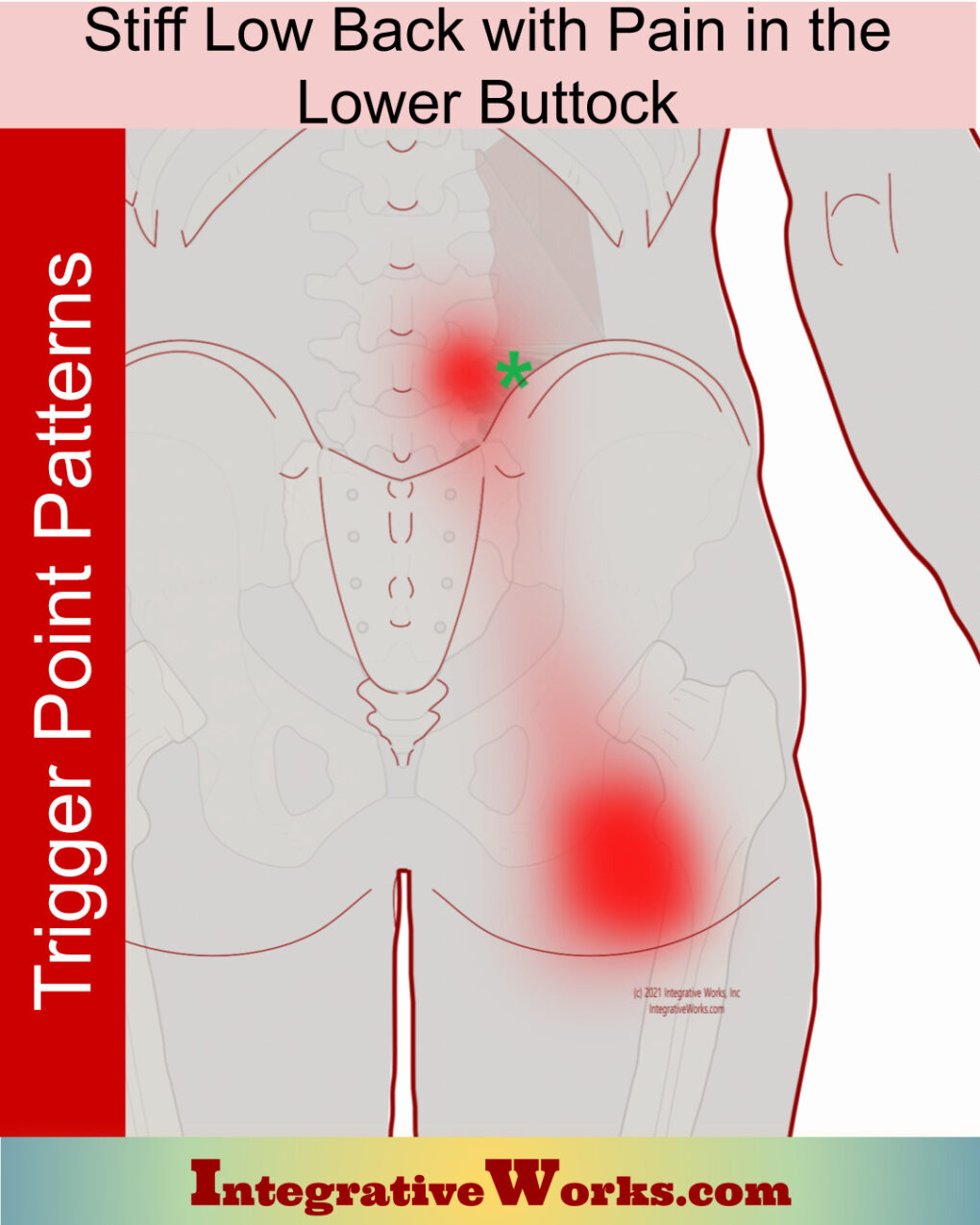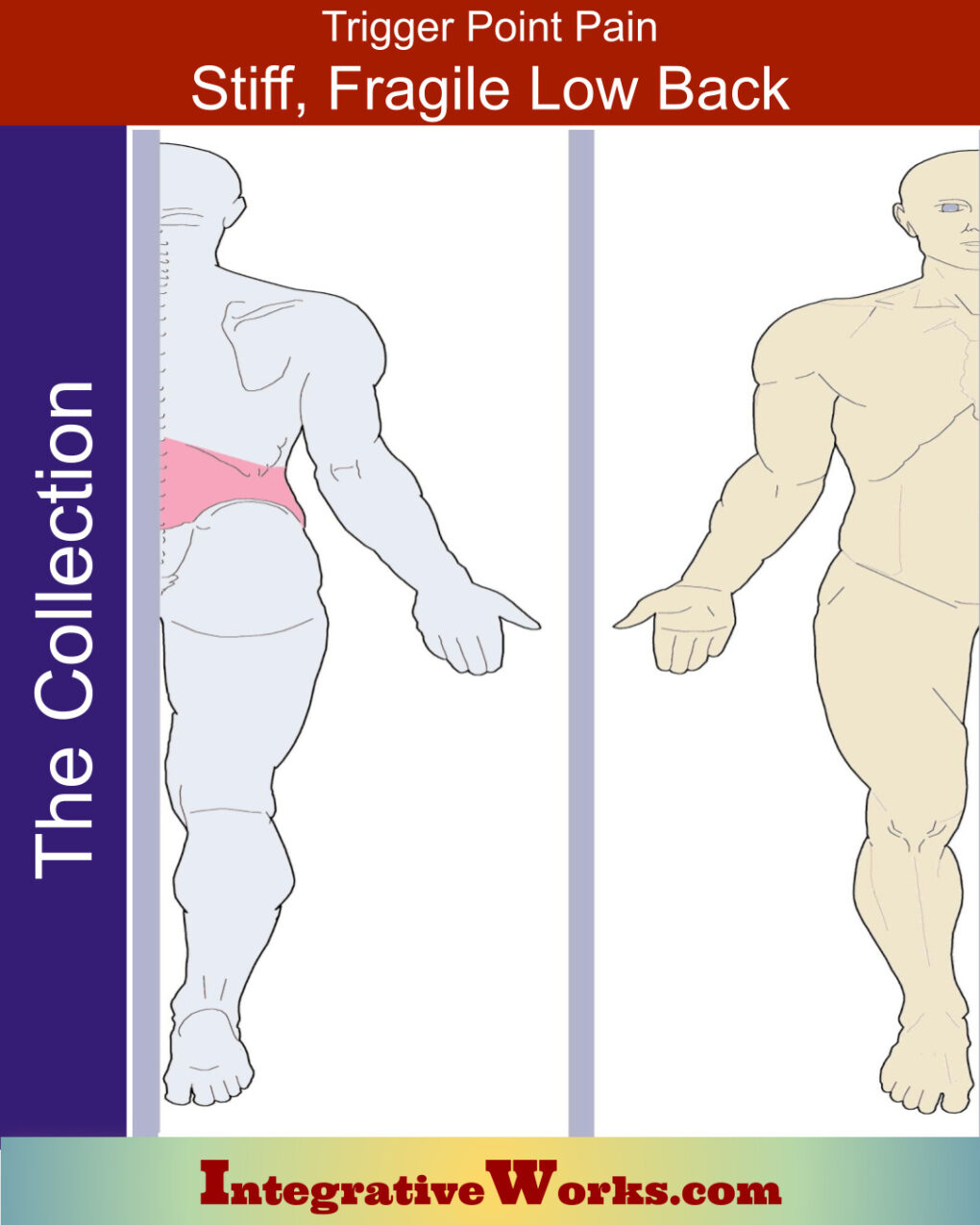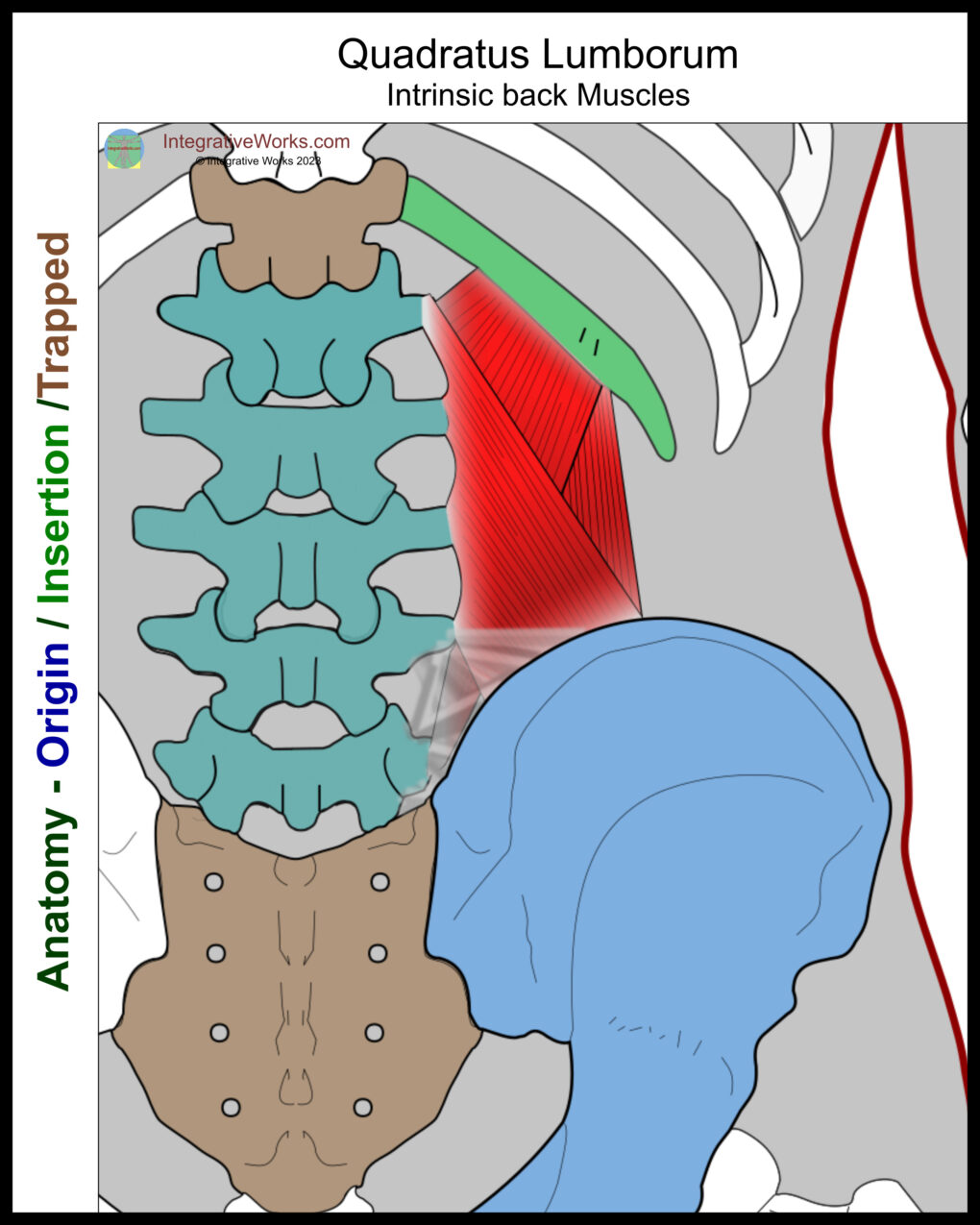
Overview
Quadratus lumborum means “the square muscle in the low back.” It connects the lumbar vertebrae to the ribs and iliac crest, trapping T12 and the sacrum between its attachments.
Origin
- iliac crest
Insertion
- Transverse process of L1-L5
- 12th Rib
Function
- extension of the spine
- elevation of the ilium
- depression of the 12th rib
- lateral flexion
Innervation
- 12th thoracic nerve
- posterior rami of lumbar vertebrae
- iliohypogastric nerve
- ilioinguinal nerve
The innervation suggests that it is an abdominal muscle, but most practitioners see it as a low-back muscle.
Quadratus Lumborum has 3 sections; iliolumbar, lumbocostal and iliocostal (lateral). They perform different functions and have different trigger point patterns. Consequently, they are best addressed as different muscles.
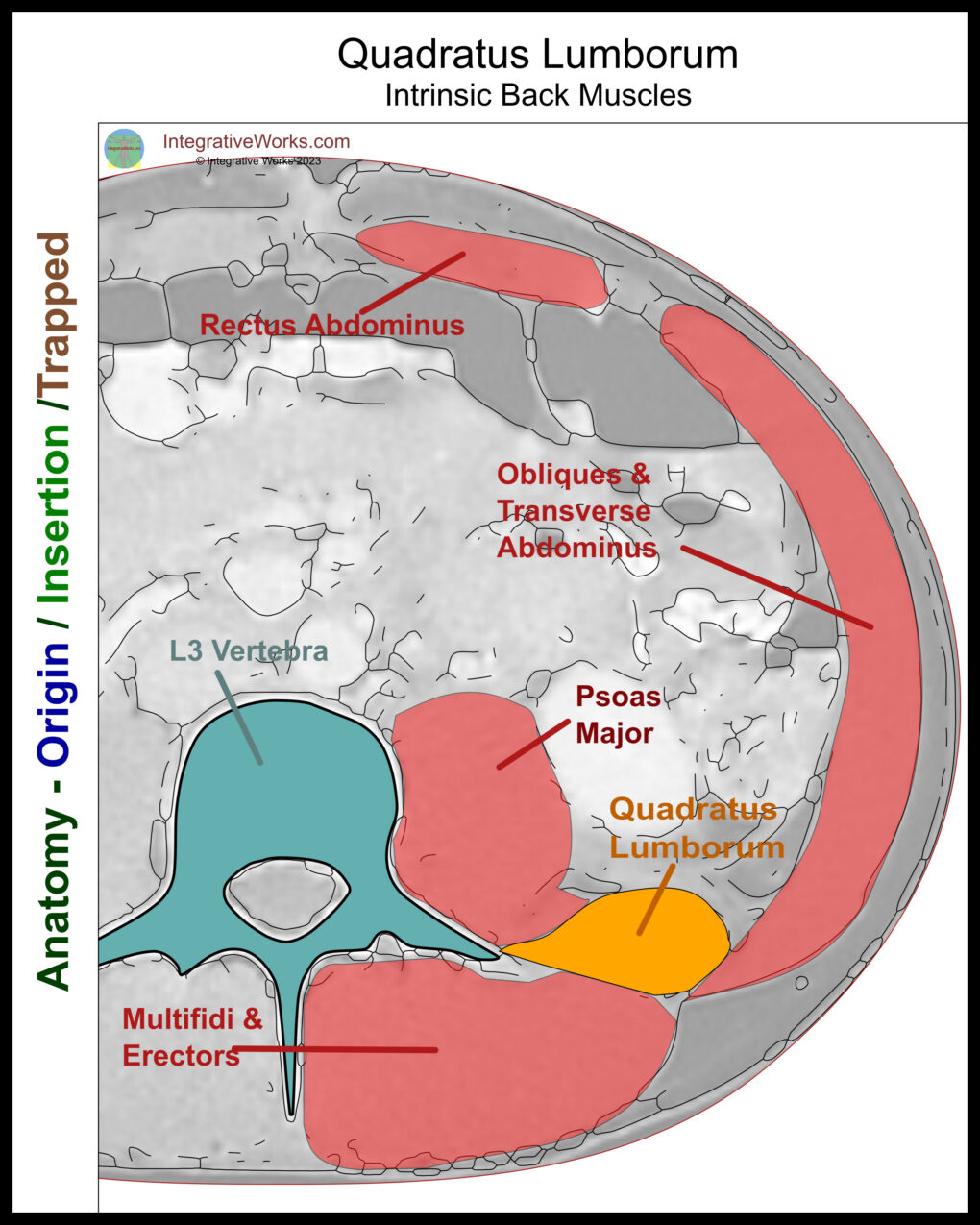
Little Muscle in the Middle
This MRI shows the quadratus lumborum in relation to the surrounding muscles. I’ve traced and colored some muscles to highlight their relationships.
Notably, I used this MRI because of the symmetry. Additionally, the QL is largest around L3. However, this quadratus lumborum is even larger than the ones I saw in most of the reviewed scans.
In general, however, the quadratus lumborum is quite variable in size. I seldom see an MRI where they look almost identical from side to side.
Often, practitioners find it to be much smaller than expected, given the debilitating patterns that it produces. Typically, the psoas and paraspinal muscles are much larger pillars along the lumbar spine.
Layers
This section on layers comes from this prominent study from the NIH. Within that study are more studies with detailed photos and illustrations of the fascicles in each layer.
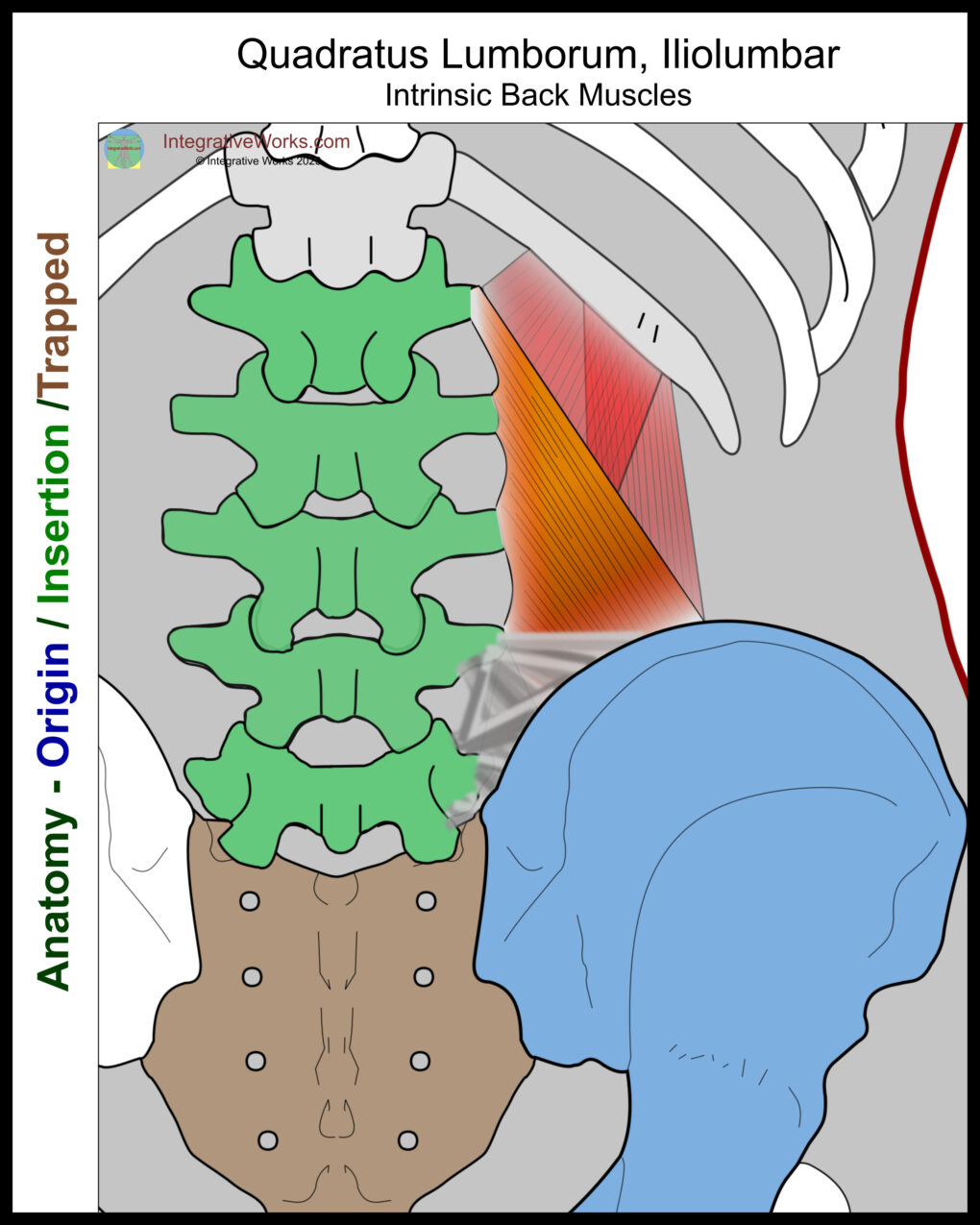
Iliolumbar (posterior) Section
The iliolumbar section connects the crest of the ilium to L1-L4, trapping the sacrum and L5 between them. It is posterior to the other sections.

Lumbocostal (middle) Section
The lumbocostal section connects the transverse processes of all the lumbar vertebrae to the medial half of the 12th rib, trapping T12 between those attachments. It is between the other section.

Lateral (anterior) Section
The lateral, iliocostal section connects the central portion of the 12th rib to the iliac crest trapping the sacrum and T12-L5 between those attachments. It is the thickest and most anterior layer.
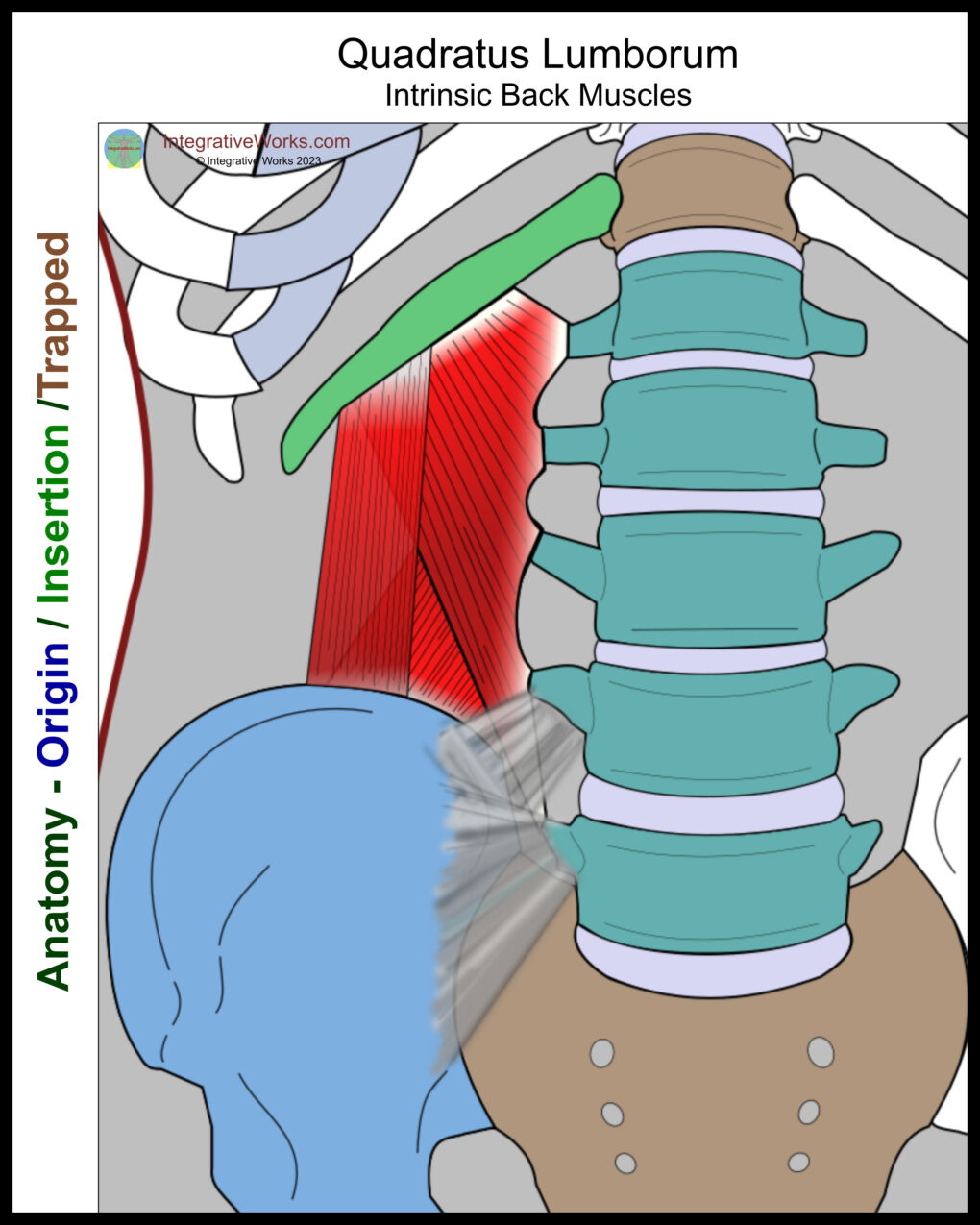
with the iliolumbar ligament
Functional Considerations
Electromyography shows that the quadratus lumborum is active in several functions; lateral flexion of the trunk, elevation of the hip, extension of the lumbar spine, forced exhalation, trunk rotation, and brisk walking.
It is often credited as being a prime mover in the low back. However, this study suggests that it is less powerful than therapists suggest. In cross sections of the low back, it is a small muscle in comparison to the pillars of psoas and multifidi around it.
The quadratus shown in most illustrations, like this one, depicts a healthy decompression of the low back. In mature adults, the lumbar vertebrae and lumbocostal space are usually compressed.
Anomalies, Etc.
Quadratus lumborum varies dramatically in dissection studies. The size, as well as the shape of each belly, have statistically significant variations. The muscle appears the be thinner medially, with a thicker lateral belly in most cases.
Iliolumbar development
It is worth noting that the iliolumbar ligament develops from the immature fibers of the quadratus lumborum during the adolescent years and atrophies when the sacroiliac joint fuses in the 4th or 5th decade.
Wikipedia entry for quadratus lumborum
Related Posts
Fragile Low Back with SI Joint Pain
Iliolumbar Ligament – Massage Therapy Notes
Pelvic Ligaments – Functional Anatomy
Quadratus Lumborum – Massage Therapy Notes
Quadratus Lumborum and Serratus Posterior Inferior – Neuromuscular Massage Protocol
Self Care – Quadratus Lumborum
Self Care – Relief from Coughing
Stiff back, Pain on the Side of the Hip
Stiff Low Back with Pain in the Lower Buttock
Stiff, Fragile, Aching Low Back: Pain Patterns, Causes, Self-Care
Cranio Cradle Cup
This mug has classic, colorful illustrations of the craniosacral system and vault hold #3. It makes a great gift and conversation piece.
Support Integrative Works to
stay independent
and produce great content.
You can subscribe to our community on Patreon. You will get links to free content and access to exclusive content not seen on this site. In addition, we will be posting anatomy illustrations, treatment notes, and sections from our manuals not found on this site. Thank you so much for being so supportive.
Tony Preston has a practice in Atlanta, Georgia, where he sees clients. He has written materials and instructed classes since the mid-90s. This includes anatomy, trigger points, cranial, and neuromuscular.
Question? Comment? Typo?
integrativeworks@gmail.com
Follow us on Instagram

*This site is undergoing significant changes. We are reformatting and expanding the posts to make them easier to read. The result will also be more accessible and include more patterns with better self-care. Meanwhile, there may be formatting, content presentation, and readability inconsistencies. Until we get older posts updated, please excuse our mess.
